POSTPONED Experimentations 11: Our Heavenly Bodies: Indexicality in Astronomy I
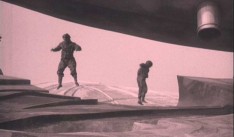
Our Heavenly Bodies (1925)
POSTPONED
Los Angeles Filmforum and Brain Dead present
Experimentations: Imag(in)ing Knowledge in Film, Program 11
Our Heavenly Bodies: Indexicality in Astronomical Films I
At Brain Dead Studios, 611 N. Fairfax Ave., Los Angeles CA 90036
Live music by Dave Harrington and Friends
Introduced by Jane de Almeida
NOTE THE CHANGE IN DAY AND LOCATION
Tickets: $20 GA, $5 for Filmforum members
At: https://studios.wearebraindead.com/movies/our-heavenly-bodies-indexicality-in-astronomy/
Three silent films from the 1920s demonstrate the state-of-the-art of the time. Two educational films from 1920, “If We Lived on the Moon” by Max Fleischer, later of Betty Boop and Superman cartoon fame, and “Tides and the Moon” show basic illustrative educational films of the time. By the time of Our Heavenly Bodies, released in 1925, the cinematic possibilities had advanced greatly. Partly a summary of what was known about the solar system, and partly a sci-fi journey on a ship to those planets, Our Heavenly Bodies was a tremendous success in its time.
This is the first of two programs that consider the question of indexicality in astronomical imagery and visions of space. Indexicality is the idea that traces of the physical world are present in images - photographic or cinematic; questioning it allows viewers to consider how we see and derive meaning from images. On Sunday, the second program, Images of Broken Light: Indexicality in Astronomy II, will take us through works such as Soviet work in the 1950s, Charles and Ray Eames’s Powers of Ten, Carl Sagan’s Cosmos, and contemporary work to see how the visualization of astronomical phenomena has evolved.
Curated by Jane de Almeida, Jheanelle Brown, Adam Hyman.
Interdisciplinary researcher Jane de Almeida works in the arts, film and new media fields, investigating the intersection among media, subjectivity and perception. As a professor and researcher, she was Visiting Scholar in the Department of Philosophy at Boston College (1999), Visiting Fellow in the Department of Architecture and History of Art at Harvard University (2005), guest researcher at MediaLabMadrid (2006), and Visiting Scholar in the Dept. of Communication at University of California, San Diego (2007). She holds a Master degree and a Ph.D. in Communication and Semiotics from the Catholic University of Sao Paulo. Currently, She has been teaching at the Art Department at the Catholic University of São Paulo, Brazil and at the Visual Arts Department at University of California, San Diego. She coordinates the Laboratory of Scientific Image (LIC) at the State University of Campinas. She curated several exhibitions such as Harun Farocki: programming the visible at Paço das Artes, Off the Radar at the Visual Arts Gallery at UC San Diego, Ulla, Ulla, Martians, Intergalactics and Aliens at Casanova, Quantum Art at FILE 2024, Ordering and Vertigo at CCBB in Rio de Janeiro, Brasília and São Paulo, among others.
Dave Harrington is a multi-instrumentalist, improviser, composer and producer. Before moving to Los Angeles in 2019, Harrington spent more than a decade in his hometown of New York City working across many different musical communities from downtown improvisation to Brooklyn indie and jambands to warehouse techno, scoring independent films, and producing albums for other artists. He is currently a member of the bands Taper’s Choice and DARKSIDE, and leads his own improvisational groups including Dave Harrington’s Pranksters West, and various assemblies of improvisers.
As a collaborator, Harrington has recorded or performed with artists including Ilhan Ersahin’s Istanbul Sessions, Nels Cline, Miho Hatori, Alanis Morisette, John Medeski, Nate Mercereau, Greg Fox, Nick Murphy (aka Chet Faker), Yuka Honda, Joe Russo, Chris Forsyth, Mauro Refosco, Lars Horntveth (Jaga Jazzist), Stuart Bogie, Brian Chase (Yeah Yeah Yeahs), The Antlers, The Master Musicians of Jajouka, Kimbra, Patrick Shiroishi, Max Jaffe, Sophia Brous, Innov Gnawa, Spencer Zahn, Genesis Breyer P-Orridge, Marshall Allen & The Sun Ra Arkestra, Angel Deradoorian, and many more.
Special thanks to Fleischer Toons & Fabulous Fleischer Cartoons Restored: Mauricio Alvarado, Claire Fleischer, Thad Komorowski, Jane Reid; Munich Film Museum: Stephanie Hausmann, Stefan Drößler.
Experimentations: Imag(in)ing Knowledge in Film is Filmforum’s expansive film series and upcoming publication that investigates the ways that experimental and scientific films produce and question the visualization of the world. Combining artist films utilizing scientific imagery, science and natural history films, and films of indigenous and traditional knowledge, the series examines how science, nature, and technology films shape our understanding of humans, nature, gender, knowledge, and progress. The multi-venue public screening series presents analog and digital time-based media incorporating diverse scientific and experimental film traditions from across the globe. The series will include eighteen screenings between September 2024 and February 2025, with films and digital works from 1874 to today from around the world, multiple guests, panels and wonderful collaborations that will reveal the possibilities and circumstances of cinema in this realm. See more at www.filmforumexperimentations.org
Experimentations: Imag(in)ing Knowledge in Film is among more than 70 exhibitions and programs presented as part of PST ART. Returning in September 2024 with its latest edition, PST ART: Art & Science Collide, this landmark regional event explores the intersections of art and science, both past and present. PST ART is presented by Getty. For more information about PST ART: Art & Science Collide, please visit: pst.art.
Major support for Experimentations: Imag(in)ing Knowledge in Film is provided by the Getty Foundation and The Andy Warhol Foundation for the Visual Arts. Additional Support from the Los Angeles County Board of Supervisors through the Los Angeles County Department of Arts & Culture, and the Department of Cultural Affairs, City of Los Angeles.
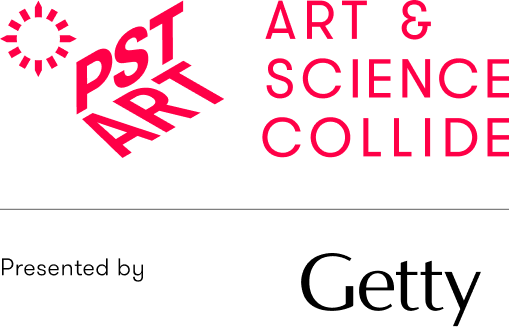

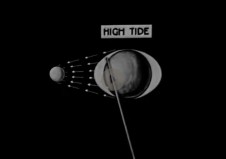
Tides and the Moon
Tides and the Moon
F. Lyle Goldman/Bray Pictures, USA, 1920, 16mm transferred to digital, b&w, silent, 5:33
Animated diagrams, coupled with live-action footage, illustrate how the moon's gravity creates ocean tides on Earth, and how the combined gravitational forces of the moon and the sun result in spring and neap tides. Films such as If We Lived On The Moon and Tides and the Moon were made with the intention to propagate ideas about astrophysics in a didactic way, demonstrating the difficulties of interplanetary travel and, and some of them, denouncing films and fiction novels as chimeras.
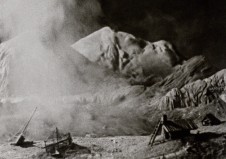
If We Lived On The Moon
If We Lived On The Moon
Max Fleischer/Bray Studios, USA, 1920, 16mm transferred to digital, b&w, silent, 7:40
Premiere of newly restored version courtesy of Fabulous Fleischer Cartoons Restored, LLC
Made in 1920, just at the beginning of Max Fleischer’s career in animation, IF WE LIVED ON THE MOON explores what was known at that time about conditions on the moon. Fascinated by science and technology, Fleischer used his talent with drawing and photography to imagine what life on the moon might be like.
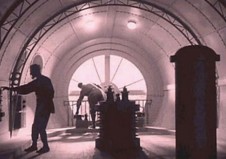
Our Heavenly Bodies
Our Heavenly Bodies (Wunder Der Schöpfung)
Hanns Walter Kornblum, Germany, 1925, digital, color, silent, 90 minutes
Restored version courtesy of the Munich Film MuseumOur Heavenly Bodies was a German super production coordinated by Hanns Walter Kornblum, which even outgrossed Metropolis (Fritz Lang, 1927) at the box office in its initial release. The film, made by UFA and Colonna Films, (a company founded by Kornblum to own his films), was restored in 2008 by the Munich Film Museum. Kornblum’s films explaining astronomy and physics at the beginning of the twentieth century were intended to popularize very new and complex theories and were very successful in doing so. For this, Kornblum sought the supervision of experts for the use of animations and visual devices of the moving image. It involved fifteen special effects specialists and nine cameramen, taking two and a half years to complete. It was scientifically supervised by four experts: professors Guthnick, Kopff, Ludendorff and Solger and designed not only as an encyclopedia of knowledge of the universe at the time, but also as a presentation of theories about time that were hotly debated. The time-space relationship was presented through a “television set” that displays images of the earth in reverse footage technique on a planetary journey. With references to the Bible, the film also presents possible catastrophic planetary consequences on Earth, to end with a metaphysical and a hopeful phrase from Goethe. - Jane de Almeida
“Our Heavenly Bodies is a German film originally released as Wunder der Schöpfung, which translates as Wonders of the Universe, or literally Wonders of Creation. In essence, it is Carl Sagan’s astounding TV show Cosmos, only condensed into an hour and a half, and released in 1925. This epic documentary takes the viewer all the way from the history and fundamentals of astronomy and explains things like the tides, night and day, the changing of the seasons, etc. The movie gives an explanation on how life started and evolved on Earth, and then takes the viewer on a sprawling tour of the solar system in a spaceship, visiting not only the moon and all the planets, but also different stars. Finally the film speculates on the destiny of Earth as the sun cools and dies: will it freeze, burn, collide with some other heavenly body, or all of the above?” - from another essay on Our Heavenly Bodies by Janne Wass, at https://scifist.net/2018/08/15/our-heavenly-bodies/
